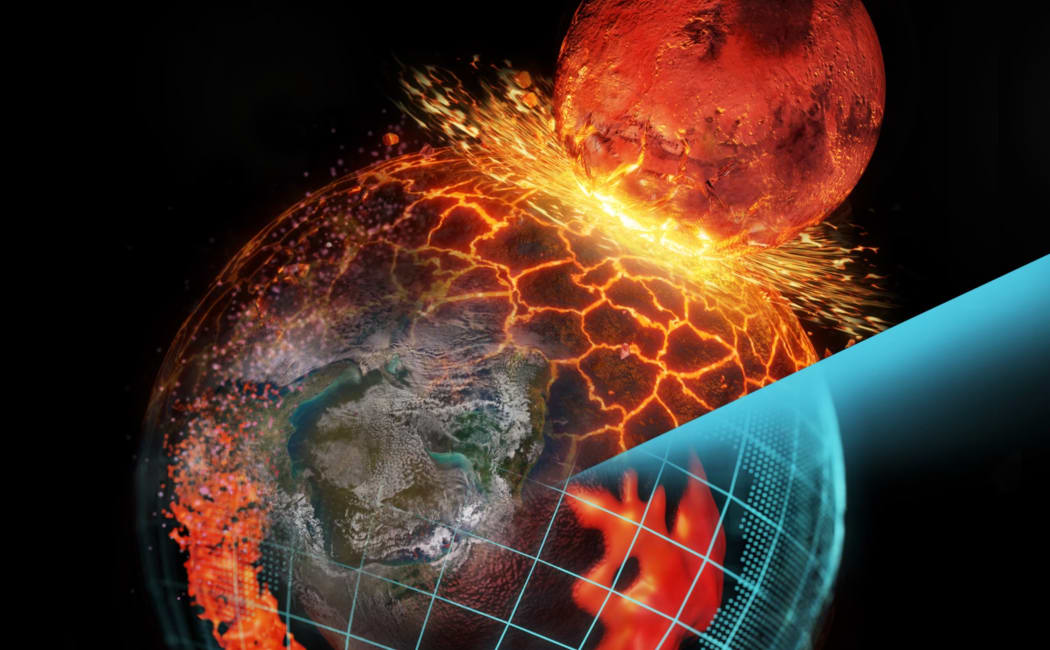Scientists Unearth First Chemical Traces of 4.5-Billion-Year-Old “Proto-Earth”

Scientists Unearth First Chemical Traces of 4.5-Billion-Year-Old “Proto-Earth”
Introduction: A Glimpse into Earth’s Hidden Origins
Deep within the rocks of our planet lies a surprising discovery: scientists have identified chemical signatures that may represent fragments of the primordial version of our world—the so-called “proto-Earth” that pre-dated the colossal impact which created the Moon. This research elevates our understanding of Earth’s origin story by revealing that some of its earliest materials still survive today, hidden in ancient rock formations and deep mantle sources.
What Is the Proto-Earth? Why It Matters
The proto-Earth refers to the earliest version of our planet, existing more than 4.5 billion years ago, before the dramatic event when a Mars-sized object collided with it—an event that changed its chemistry and structure forever. According to planet-formation theory, the young Earth was molten and in a state of constant upheaval. After that impact, much of the original material was reshuffled, melted, or lost. Finding any remnant of that stage provides a rare window into Earth’s building blocks, the materials that coalesced into our planet and defined its subsequent evolution.
The Research Breakthrough: Potassium-40 as a Geological Fingerprint
In a recent study published in Nature Geoscience, researchers led by Nicole X. Nie at MIT analyzed the isotopic composition of potassium—specifically the rare isotope Potassium-40 (⁴⁰K)—in ancient rock samples and deep-mantle materials. They found that certain specimens from Greenland, Canada, and Hawaii exhibit a distinctive deficiency of ⁴⁰K, about 65 parts per million lower than typical Earth rocks.
What makes this so significant is that the deficit in ⁴⁰K cannot be easily explained by standard geological processes such as mantle mixing or surface weathering. Instead, it appears to mark ancient domains in Earth’s interior that escaped the full re-mixing after the giant impact. These domains may therefore preserve part of the proto-Earth’s original mantle chemistry.
Key Evidence & Sample Locations
The team examined a range of rock types: some of the oldest known crustal fragments from regions such as the Isua and Nuvvuagittuq cratons (in Greenland and Canada), and modern hotspot-derived basalts from deep mantle sources like Hawaii. The link across time and depth strengthens the case that we are observing a mantle reservoir that retains a proto-Earth signature.
The rocks with low ⁴⁰K are notably distinct from meteorites and from the bulk Earth’s mantle signature. In other words, they don’t match the composition of known primitive meteorite groups—suggesting that the proto-Earth was built from material not sampled in our current meteorite collections.
Why the Potassium-40 Deficit Matters
Potassium-40 is radioactive and rare—it constitutes only a tiny fraction of all potassium in Earth’s rocks. The fact that some very ancient rock samples show a marked deficiency implies they avoided the widespread modification and mixing that erased much of the early chemical signature. That means we might be looking at a surviving piece of the mantle as it existed before the Moon-forming impact.
Implications for Earth’s Formation & Composition
This discovery reshapes how scientists view Earth’s early assembly. It suggests that when the proto-Earth formed, it included components with isotopic signatures distinct from the meteorites we’ve sampled. After the giant impact, new material was added, and the mantle began a deeper mixing process—but these early pockets appear to have remained relatively untouched.
Moreover, if parts of the deep mantle still carry a proto-Earth signature, it means Earth’s interior remains heterogeneous in ways that reflect its earliest history. That has implications for geodynamics, volcanic hotspots, and even the distribution of radioactive heat sources deep in the planet.
What It Tells Us About the Moon-Forming Impact
The giant impact theory posits that a Mars-sized body (often called Theia) collided with proto-Earth, causing massive melting and mixing. It long seemed that this event would obliterate earlier chemical signatures. Yet the detection of surviving proto-Earth material suggests that not all of Earth’s early mantle was reset—some pockets were insulated and preserved, acting as time capsules of our planet’s birth.
Challenges & Future Directions
While the results are compelling, several questions remain. For example:
- How many mantle domains preserve proto-Earth chemistry? The known examples may represent only a fraction of the original reservoirs.
- Which materials delivered to Earth remain unsampled? Because the rock signature doesn’t match known meteorite groups, the original building blocks of Earth might still be missing from our collections.
- How did geological processes preserve these signatures? The mechanisms by which deep mantle domains remained isolated from widespread convection and mixing need further study.
Future research will likely focus on sampling more ancient rocks and deep-mantle-derived lavas, refining isotopic analysis, and improving geochemical and geodynamical models that trace the pathways from proto-Earth to modern Earth.
Conclusion: A Window into Earth’s Deep Past
The discovery of a potassium-40 deficit in certain ancient rock samples marks a watershed moment in geology and planetary science: for the first time, we may be glimpsing chemical relics of Earth before the Moon-forming impact. This finding opens a door to deeper questions about how our planet formed, evolved, and retained pieces of its earliest identity within its deep interior. As more data emerges, our understanding of the proto-Earth, its materials, and its legacy will continue to evolve—and with it, our knowledge of the place we call home.
